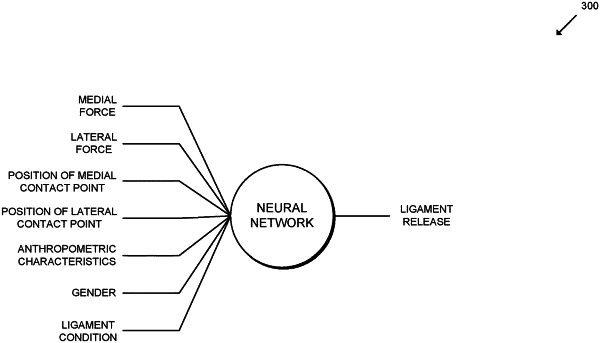| CPC A61B 5/4533 (2013.01) [A61B 5/4585 (2013.01); A61B 5/7267 (2013.01); A61F 2/468 (2013.01); A61B 5/1121 (2013.01); A61B 5/4836 (2013.01); A61B 34/10 (2016.02); A61B 34/30 (2016.02); A61B 2034/105 (2016.02); A61B 2562/0247 (2013.01); A61B 2562/0252 (2013.01); A61B 2562/0261 (2013.01); A61F 2/4657 (2013.01); G06N 3/02 (2013.01); G06N 20/00 (2019.01)] | 12 Claims |

|
1. A computing system for intra-operative ligament balancing of a joint of a patient comprising:
at least one sensor;
at least one processor;
a neural network trained on data from previous joint replacement procedures, including data regarding successful ligament balancing steps, to recognize different patterns or signatures in the data and to understand effects of various ligament releases on the ligament balance; and
at least one memory comprising a plurality of instructions stored thereon that, in response to execution by the at least one processor, causes the computing system to:
receive one or more surgical parameters, the surgical parameters comprising one or more of demographic data of the patient, muscularity of the patient, ligament condition of the patient, deterioration levels of various joint structures of the patient, collagen levels of the patient, ligament elasticity of the patient, prior injuries of the patient and patient activities;
input the one or more surgical parameters to the neural network;
receive real-time sensor data associated with the ligament balancing, the sensor data generated by the at least one sensor;
input the sensor data to the neural network, the neural network recognizing a pattern or signature indicated by the sensor data and the surgical parameters; and
receive output from the neural network, the output comprising one or more ligament releases to be performed to achieve ligament balance, based on the recognized pattern or signature.
|